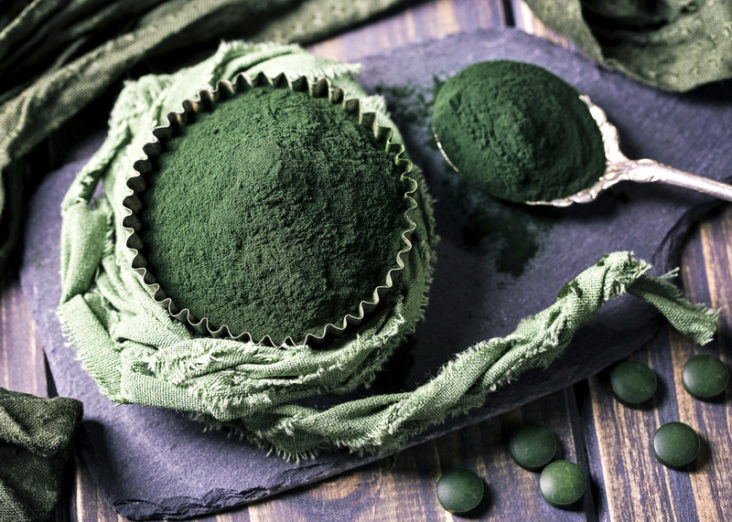Spirulina is a blue-green algae that nutritionists are calling the superfood of the future. It is an easily produced, non-toxic species of Arthrospira bacteria.
You probably never thought you would be adding algae powder from tropical lakes to your smoothies, but spirulina is becoming quite the popular addition for many health-conscious eaters. Even though this superfood is in the spotlight right now because of its nutritional profile, bright green color, and bounty of health benefits, spirulina has been a superfood long before 21st-century nutritionists began adding it to their smoothies.
Spirulina is quite possibly one of the oldest life forms on Earth. The first people to ever use this algae as a food source is unclear, but Aztecs for sure and African natives may have consumed the algae in their daily diet many centuries ago in the shape of cakes and broths.

Similar to other sea vegetables, like kelp and chlorella, as far as its nutritional makeup, spirulina is grown around the world, from Hawaii to Mexico and Africa.
Dried spirulina contains about 60 to 70 percent protein. It’s actually considered one of the few plant-based sources of “complete protein,” meaning it contains all essential amino acids your body needs but can’t produce on its own (other foods in this category: quinoa, buckwheat, hummus, soy, hump and chia seeds). It’s also a good source of calcium, iron, magnesium, and vitamins A, E, and K.
Spirulina may be more beneficial for vegans or vegetarians that lack adequate iron and vit.B12 in their diet (even though vit.B12 in not absorbed well after ingestion). Touted as a “superfood,” health claims surrounding the blue-green algae include its ability to boost immunity, fight inflammation, and reduce fatigue. It was also proved effective in fighting allergies (allergic rhinitis).
Human evidence suggests that spirulina can improve lipid and glucose metabolism, while also reducing liver fat and protecting the heart. Animal studies are very promising as well, as spirulina has been shown to be of similar potency as commonly used reference drugs, when it comes to neurological disorders. These effects also extend to arthritis and immunology. Given its high antioxidant content, spirulina has often been praised as an immune system booster.

Spirulina has a few active components. The main ingredient is called phycocyanobilin, which makes up about 1% of spirulina (and gives spirulina its deep bluish/greenish hue). This compound mimics the body’s bilirubin compound, in order to inhibit an enzyme complex called Nicotinamide Adenine Dinucleotide Phosphate (NADPH) oxidase. By inhibiting NADPH oxidase, spirulina provides potent anti-oxidative and anti-inflammatory effects.
Spirulina – like any blue-green algae – can be contaminated with toxic substances called microcystins. It can also absorb heavy metals from the water where it is grown. For these reasons, it is important to buy spirulina from a trusted brand.
The easiest way to utilize spirulina is to mix it into various foods. While you could simply mix a spoonful into a glass of water, many people find its pungent taste rather off-putting, but adding it to a smoothie, fruit juice, soup or other foods, even dips, can be a great way to take advantage of its many benefits without suffering through the experience. Enjoy!
